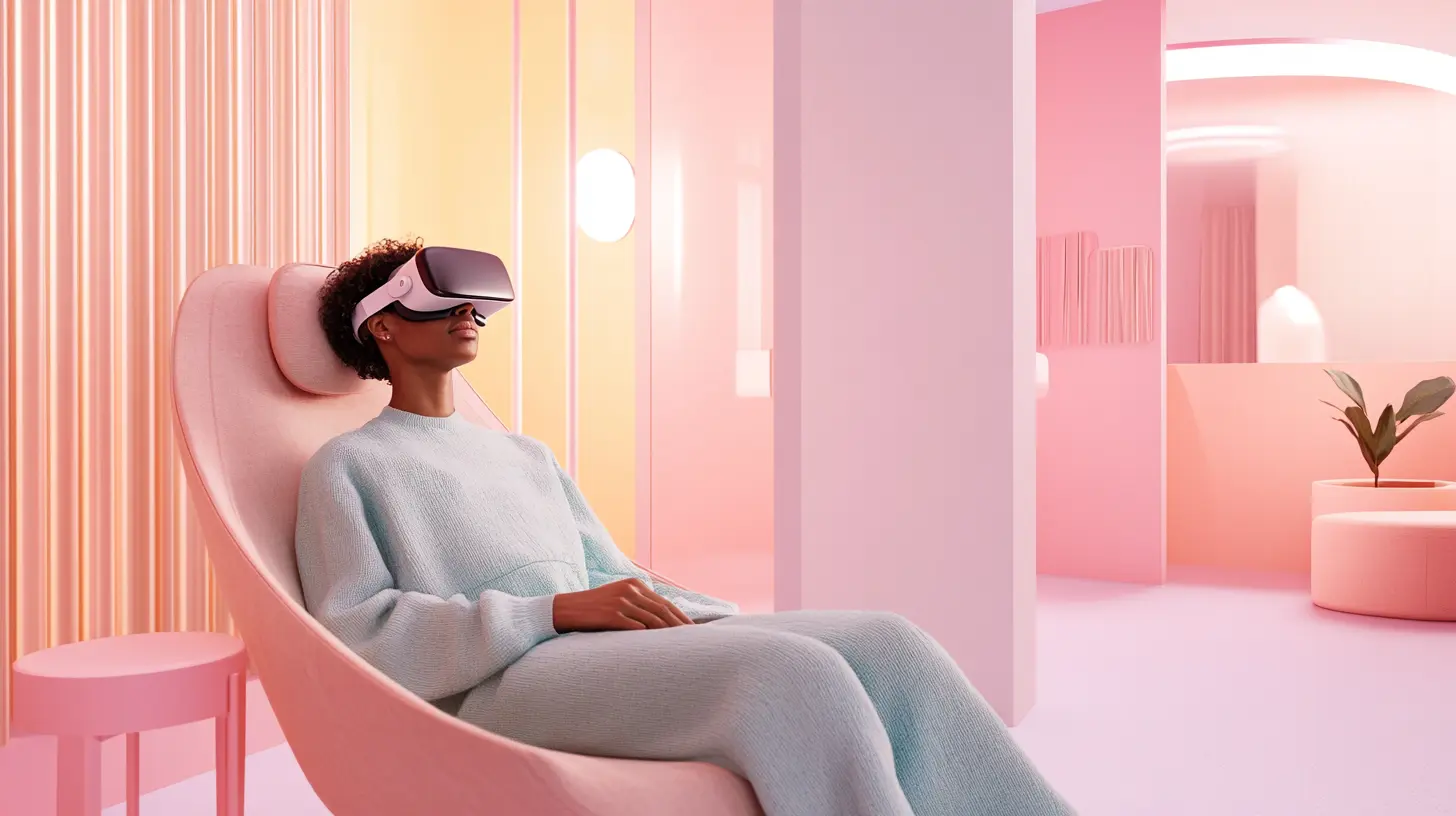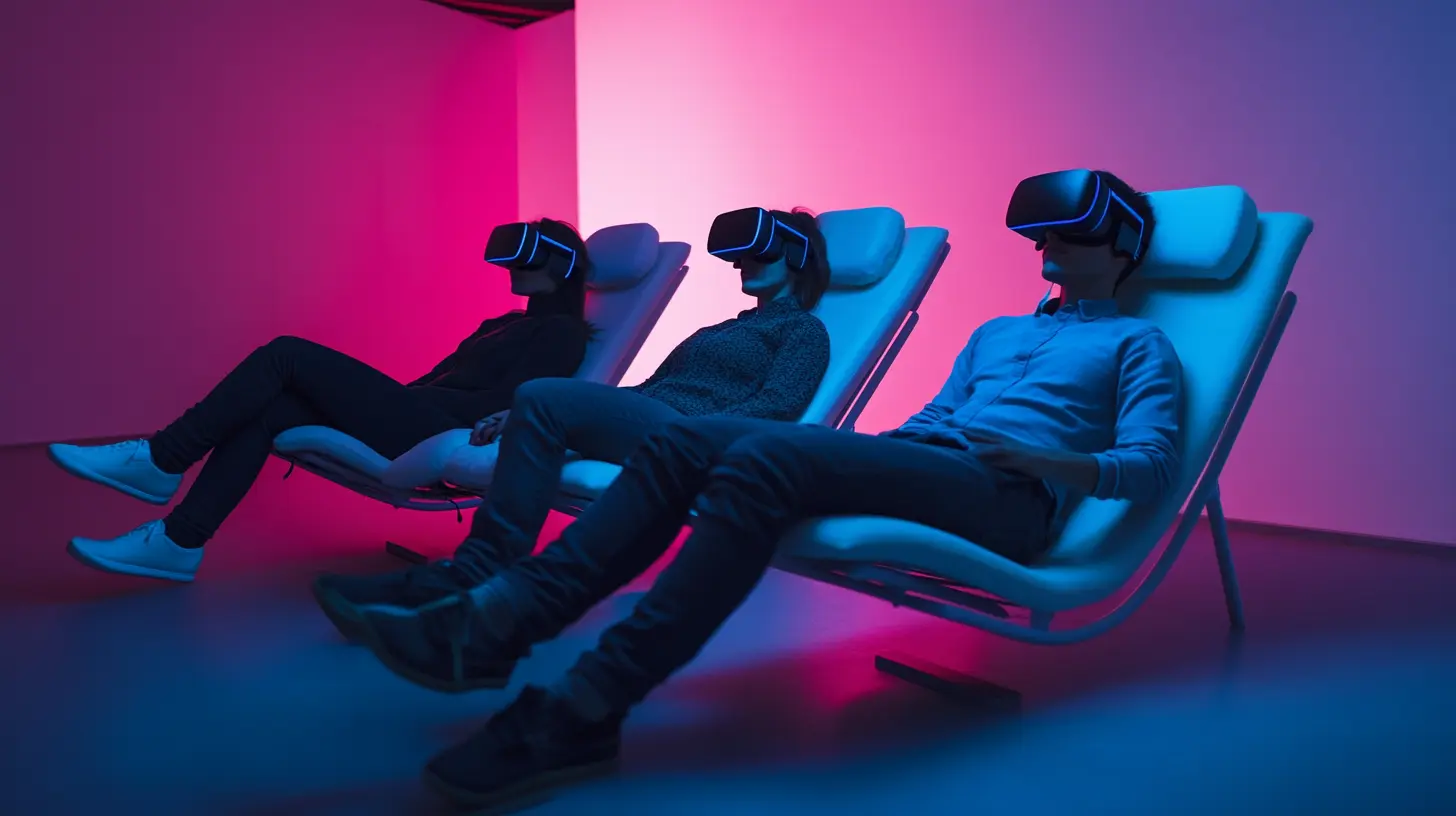
Introduction: Stepping Into Healing Future
What if you recovered from an injury or surgery in a way that is not just playing a game, it feels more like therapy. Virtual Reality (VR) is changing this reality, by providing novel, engaging, and efficient, personal therapy. With its cutting-edge technology, this technology is changing how patients heal and are able to get back mobility and strength faster than traditional methods.
VR in Physical Therapy: What is it?
At times, physical therapy is used with Virtual Reality—in other words, it involves integrating a computer-generated, immersive experience to aid in rehabilitation. Using a VR headset, patients interact with simulated scenarios like real-life movement.
The objective of VR in physical therapy is to fulfil the goals of therapy for each patient individually, for example, enhancing the speedy recovery of the patient and coordinating with patient-centric therapies.
VR Physical Therapy Key Components
Headsets and Motion Sensors
The backbone of VR physical therapy are headsets and motion sensors. Immersive visuals are provided by high-resolution headsets, like Oculus Quest or HTC Vive, and motion sensors track the patient's movements with amazing accuracy. In this case, some systems use wearable sensors on limbs to monitor activity in specific joints or muscles.
Therapeutic Software
Therapeutic software is a specialized software with a variety of activities ranging from what is needed for therapy purposes. Such examples include virtual environments in which one could train for daily tasks such as reaching for objects, walking on rough planes, or traversing obstacle courses. For adjusted difficulty levels, these programs can change based on real-time performance.
Feedback Mechanisms
Immediate feedback through visual, auditory, or haptic (touch-based) cues – is one of the most important benefits of VR therapy. Those performing a balance exercise, for instance, can see their posture alignment in time to correct movements immediately.
Data Analytics Tools
Analytics dashboards help advanced tools keep track of a patient's progress with time. Therapists can record metrics like range of motion, reaction speed, and balance stability and use these metrics to change their evidence-based treatment plans.
Integration with Wearable
Fine motor skills are captured using smart gloves, and full body movements are tracked by motion-tracking suits to further enhance the VR experience. Integration with wearable equipment will provide more precise and more engaging therapy.
A 2020 study published in JMIR Rehabilitation and Assistive Technologies found that 83 per cent of patients found VR-based therapy was more effective than traditional methods.
According to Grand View Research’s VR healthcare market report, the VR market was forecast to grow with a CAGR of 30.7 per cent from 2021 to 2028 to witness expanding usage of physical therapy.
Virtual Reality in Physical Therapy Applications
Virtual Reality can be used to rehabilitate people who have suffered injuries or had surgery as VR can simulate exercises that can help in recovering from injuries or surgeries. Take, for example, a patient who has had a knee replacement and as such can practice walking in a safe, controlled environment through VR to reduce fear of falling.
Neurological Rehabilitation
VR is a boon in disguise for patients who have neurological conditions like stroke, Parkinson's, or cerebral palsy. VR games that focus on improving hand-eye coordination or balance can make huge differences in the ability of the body and motor functions.
VR for Physical Therapy
Traditional therapy exercises can be monotonous as such introducing VR for physical therapy through gaming exercises can make physical therapy easier and enable patients to stick to their regimen. Through personalized treatment plans, the therapist can customize exercise to make the patient comfortable and enable faster recovery.

Applications of VR in Physical Therapy
Rehabilitation After Injuries or Surgeries
VR can simulate exercises that help the patient recover from injuries or surgeries. For instance, patients who have recently had a knee replaced can practice their walking in a contained, safe environment and decrease the fear of falling.
Chronic Pain Management
Some patients can be distracted from pain using VR to help patients by providing them with painless environments. According to recent studies, VR is known to reduce pain perception by as much as 25% and constitutes an alternative to medication.
Research in Pain Medicine finds that VR therapy lowers chronic pain by 23 per cent. VR rehabilitation tools were shown to offer improved motor recovery in 70 per cent of stroke patients in a Frontiers in Neurology conducted trial.
Real-Time Progress Tracking
Real-time progress tracking is possible using VR as therapists can better track their patient’s performance through accurate feedback and can then modify plans for their patients if needed.
Improved Recovery Outcomes
VR-based therapy accelerates recovery times. Patients using VR regain mobility 30 per cent faster than those who do conventional therapy. According to the Journal of Neuro Engineering and Rehabilitation, VR balance-based training cuts the elderly fall risks by 36%, In fact, Harvard Health Publishing writes that VR therapy boosts adherence rates to over 50 per cent more than typical or conventional therapies.
Challenges and Limitations
Accessibility
Accessing VR equipment and software is very expensive for smaller clinics or underprivileged patients.
Motion Sickness
VR causes some patients discomfort or dizziness making it difficult to work with that patient. The PLOS ONE study found that around 10 to 20 per cent of VR users experience some form of mild to moderate motion sickness.
VR in Physical Therapy in the Future
AI-Driven Personalization
With the help of artificial intelligence, VR therapy is about to go to the next level through hyper-personalized treatment plans. Real-time patient performance can be analyzed and exercises can be customized to exactly what the patient needs to promote optimal progress and results with an AI algorithm. For example, a stroke patient's therapy can be adjusted depending on collected muscle response data during therapy sessions.
Portable as well as Home-Based VR Solutions
VR therapy at home is becoming more and more common as gadgets become more affordable and smaller. As VR systems are portable, patients can continue their rehabilitation therapy from the comfort of their own homes, which will promote consistency and reduce the need for frequent professional visits.
Incorporation with Advanced Wearables
Wearable technology, such as fitness trackers, and smartwatches with biosensors, will be used with virtual reality (VR) to enhance the therapeutic experience. To provide therapists with information they would not otherwise have, these wearables may also track vital indications like heart rate, oxygen saturation, and muscle activity during virtual reality sessions.
Multi-User VR Platforms
Multiuser settings that enable group treatment sessions or real-time remote interactions between patients and therapists may be supported by future VR platforms. A sense of belonging can add excitement to therapy.
A Better Immersion Experience with Haptic Feedback
Advances in haptic technology will enhance the realism of virtual reality experiences. Through 'haptic gloves' or suits, patients will be able to 'feel' textures of real-world events, which will help them improve their motor skills and better mimic real-world conditions.
Applications in Mental Health beyond the Intensive Care
It is anticipated that VR will be able to treat the mental health aspect of recovery in addition to physical therapy. Immersion settings for stress reduction, relaxation, or cognitive training might complement physical therapy to provide more comprehensive approaches to patient care.
By 2030, 60% of healthcare professionals will employ VR technologies driven by AI, according to the World Economic Forum. Due to advancements in the virtual reality industry, Fortune Business Insights projects that the VR healthcare market will reach $20.62 billion by 2028.
Conclusion: A New Era in Recovery
Virtual reality is revolutionizing physical therapy; it is not just a fad. VR makes rehabilitation more interesting, efficient, and individualized by fusing technology and digital product solutions with healthcare. Although there are still obstacles, there are also a lot of potential advantages. The clear message is that for both patients and therapists: Virtual and immersive physical treatment holds great promise for the future.
See All AI Tools















